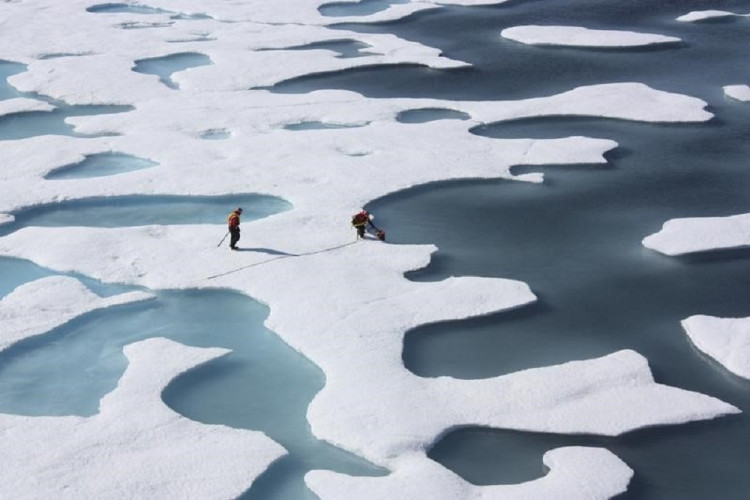Researchers have discovered that sea ice across much of the Arctic is thinning twice as fast as previously thought.
Arctic ice is melting as the climate crisis raises temperatures, creating a vicious circle in which more dark water is exposed to the sun's heat, leading to worsening heating of the planet.
"We believe our new calculations are a major step forward in terms of more accurately interpreting the data we have from satellites," said Britain's University College London professor Julienne Stroeve, who jointly authored the study published in The Cryosphere journal.
The research, led by college researchers, concluded that the ice in the coastal regions was thinning at a rate that was 70% to 100% faster than previously thought.
The new study employed novel computer models to generate detailed snow cover estimates spanning the years 2002 to 2018. To assess snow accumulation, the models tracked temperature, snowfall and ice floe movement.
Using this data to calculate sea ice thickness, researchers discovered that it is thinning twice as fast as previously estimated in the seas surrounding the central Arctic, which comprise the majority of the polar region.
"Sea ice thickness is a sensitive indicator of the health of the Arctic - and, when the Arctic warms, the world warms," said Robbie Mallett of University College London, who led the study.
Changes in the Arctic are also thought to have an impact on extreme weather events such as heatwaves and floods throughout the Northern Hemisphere. The rapid thinning of sea ice has implications for human activities in the Arctic.
"There are [still] a number of uncertainties but we believe our new calculations are a major step forward," Stroeve said. "We hope this work can be used to improve climate models that forecast the effects of long-term climate change in the Arctic - a region that is warming at three times the global rate and whose ice is essential for keeping the planet cool."






